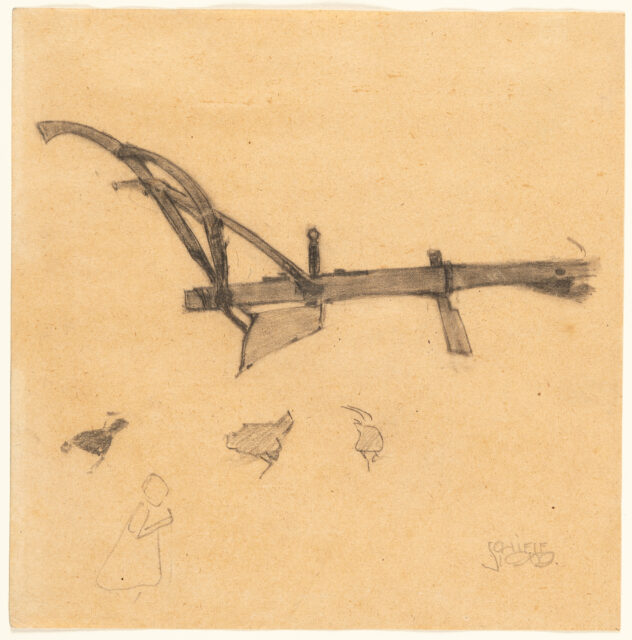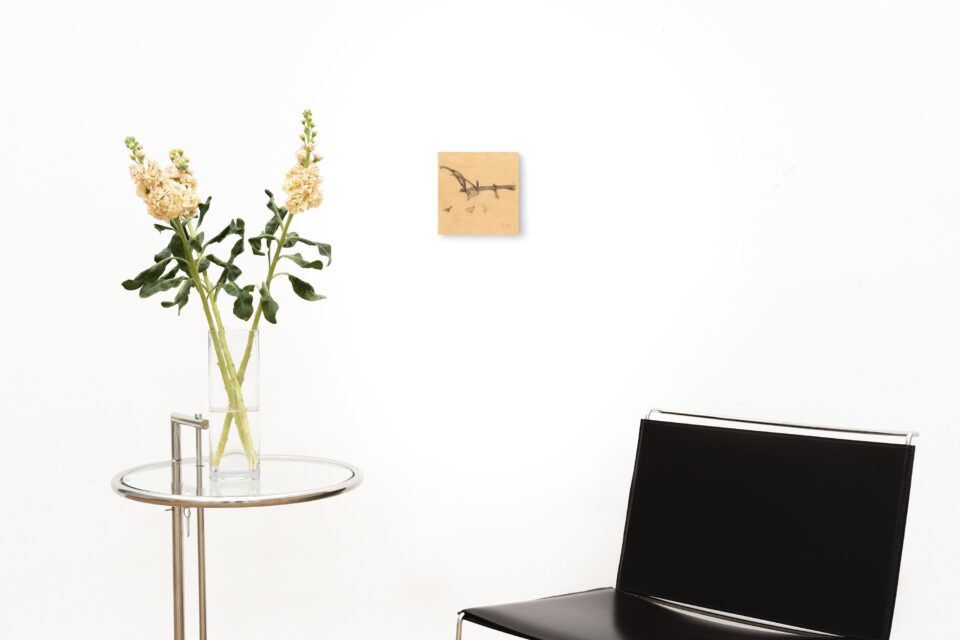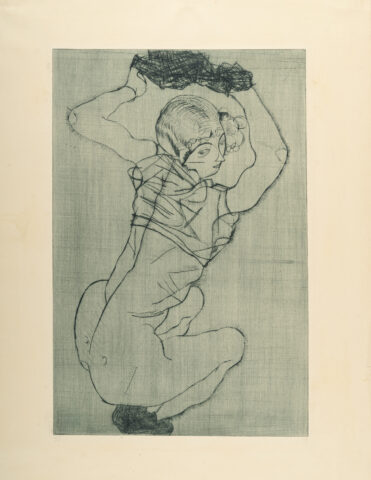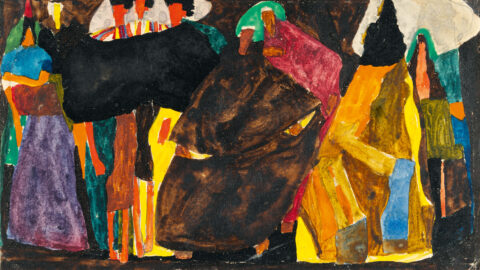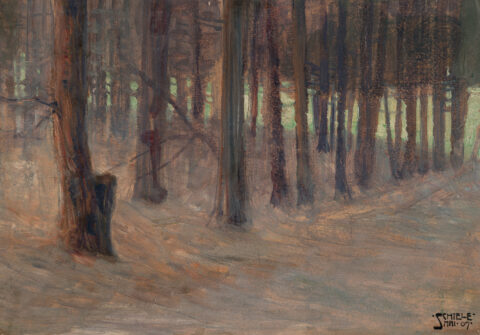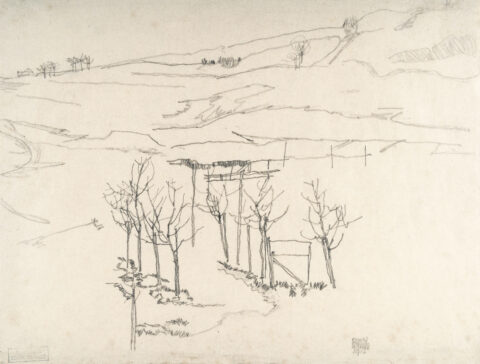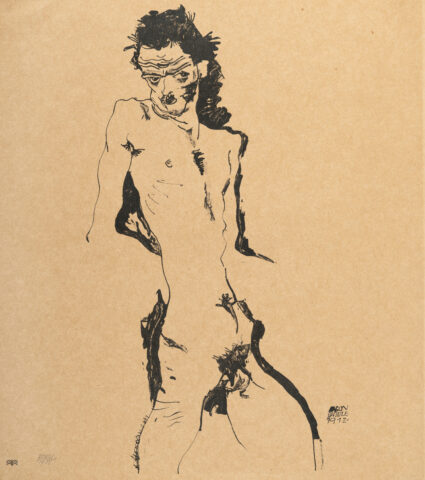
A plough
Details
Kallir D 373.
Exhibition:
The drawing: Egon Schiele, Gustav Nebehay Kunsthandlung, Vienna 1919, cat. no. 52;
Egon Schiele, Seibu Museum of Art, Tokyo 1979, cat. no. 9;
Egon Schiele: Vom Schüler zum Meister/Da allievo a maestro, Academy of Fine Arts, Vienna et al. 1984-1987, cat. no. 18;
Egon Schiele, Pinacoteca C., Rome/ Museo d’Arte Moderna Ca’ Pesaro, Venice 1984, cat. no. 47;
Egon Schiele, Fondation Pierre Gianadda, Martigny 1986/87, cat. no. 16;
Egon Schiele, Mezinárodní kulturní centrum Egona Schieleho, Krumau/Moldau 1993/94, p. 81;
Egon Schiele. Works on Paper, Galerie Hauser & Wirth, Zurich 1994, p. 37.
Provenance:
Estate of Benedikt Fred Dolbin (1883-1971), New York;
Serge Sabarsky Collection/Asset, New York, acquired from the aforementioned in 1971;
Collection/Foundation Vally Sabarsky, New York.
Descrizione
– Exciting insight into the work process of the 19-year-old artist
– On the reverse with the reduced depiction of two striking profiles
– Schiele celebrated his first successes in 1909, but at the same time his style was changing and he was finding his own voice
A plough, a few sketched chickens and the hint of a girl. That is all Schiele declared accomplished in 1909 on the present sheet by signing and dating it. Here, a young artist, just 19 years old, is not only attempting to depict a plough in a naturalistic manner, he is also creating an atmosphere in just a few elements. Chickens peck, a child enters the picture, the large, heavy plough suddenly no longer floats on the empty page, but sits stably on a farmer’s farmyard. Schiele is already trying something here that we appreciate so much in his later works; he reduces the scenery to such an extent that its message, its essence, is reproduced, but the degree of abstraction requires the viewer’s imagination.
The reverse shows two charismatic, striking profiles of a man and a woman. Their formal language is reminiscent of Art Nouveau, with echoes of Schiele’s mentor Gustav Klimt – his faculty paintings for the University of Vienna, for example, from which these two reduced faces could have originated. But it is precisely this side that Schiele did not sign. It is entirely in the style of the time. In 1909, Schiele was artistically caught between two stools. On the one hand, he followed his mentor Gustav Klimt, who supported him just as much as Oskar Kokoschka or the critic Arthur Roessler. At the same time, however, he met Max Oppenheimer in 1909, who introduced him to the world of van Gogh’s Expressionism, whose style would become fundamentally important to him in finding his own artistic voice. The work offered here shows this process of finding his voice, the transformation from searching student to autonomous artist. The faces are unquestionably of quiet grandeur and sublimity. The plough, however, this inconspicuous device, is what will make Schiele famous and world-famous.
* Tutte le informazioni includono la commissione a carico dell'acquirente (27%) senza IVA e senza garanzia. Salvo errori.
** Tutte le informazioni più la commissione a carico dell'acquirente e l'IVA e senza garanzia. Salvo errori.
*** Con riserva: L'offerta è stata accettata al di sotto del limite. L'acquisizione dell'opera potrebbe essere ancora possibile nella nostra vendita post-asta.
R = Le opere d'arte regolarmente tassate
N = Opere d'arte soggette a tassazione differenziata e provenienti da un paese non UE
Non è consentita la riproduzione e la distribuzione privata o commerciale di tutte le illustrazioni delle opere esposte nell'archivio della mostra e dell'asta. Tutti i diritti riservati.



